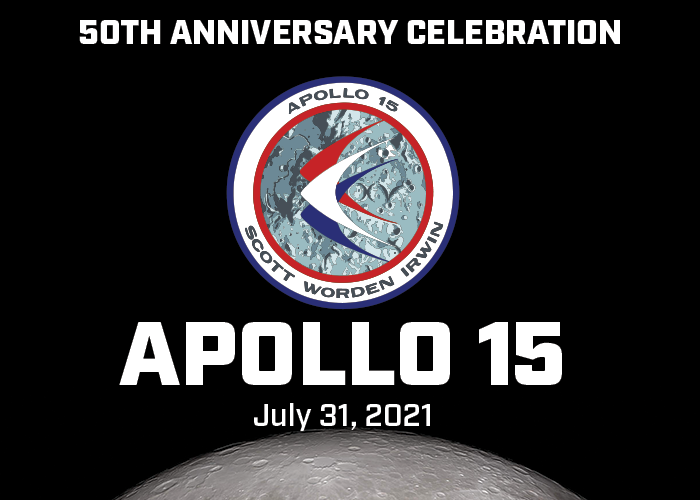
On July 31, 2021, the San Diego Air & Space Museum was honored to host the exclusive, one-and-only in-person 50th Anniversary of Apollo 15 Celebration. The evening featured an expert panel of the men who made history during one of the first truly scientific explorations of the Moon, including Commander Dave Scott, Lead Flight Director, Gerry Griffin and Apollo 15 Science Team member, Jim Head.
During the panel, Scott and Griffin shared never-before-told stories and anecdotes about the training and expert exploration of the Moon, including a fascinating video presentation explaining every step of the mission -- from liftoff to the lunar landing and time on the Moon’s surface, to their return to Earth and splashdown -- in vivid detail.
Apollo 15 launched at 0936 local time on July 26, 1971, with the objective of exploring the Hadley Apennine region of the Moon, the most scientifically significant site of the entire Apollo program. After a three-day transit and one day in lunar orbit, Commander Scott and Lunar Module Pilot Jim Irwin landed their Lunar Module “Falcon” near Hadley Rille at the base of the Apennine mountains to live and work on the Moon for three days, as Command Module Pilot Al Worden orbited the Moon in the Command Module “Endeavor,” operating a large suite of sophisticated scientific instruments.

Scott and Irwin drove the first Lunar Roving Vehicle to explore three areas of unique geological features on the slopes of Hadley Delta mountain (9,000 feet) and the edge of Hadley Rille (1,000 feet deep, 1.5 miles across).
During their three EVAs and roughly 18 hours outside the Lunar Module, they observed for the first time stratigraphic layering in the sides of Hadley Rille, and they maneuvered the Lunar Rover 3.1 miles from the Lunar Module including up the steep soft slopes (19 degrees) of Hadley Delta mountain. They collected 179 pounds of lunar rocks and soil, among the most significant of which were an anorthosite (15415), the first sample of the primordial crust of the Moon (age 4.5 billion years) often termed the “genesis rock”, and a surprising “friable green clod” (15425), containing the first water discovered on the Moon.
Scott and Irwin would later precisely rendezvous with Al Worden for two more days of science in lunar orbit. They returned to Earth in three days splashing down in the Pacific Ocean, where they were met by and recovered by the USS Okinawa.
After the mission NASA cited Apollo 15 as “the most complex and carefully planned scientific expedition in the history of exploration”.
2001 Pan American Plaza, San Diego, CA
Phone: 619.234.8291
Información En Español
Contact Us
We would like to thank all our sponsors who help us make a difference. Click here to view all who help us.

The San Diego Air & Space Museum is a 501(c)(3) non-profit organization. Federal Tax ID Number 95-2253027.
